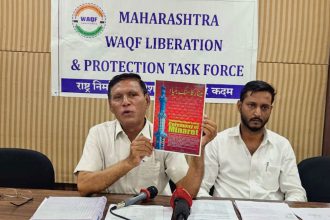As millions of people worldwide stay inside their homes to minimize the transmission of the deadly Coronavirus, healthcare workers are selflessly stepping out of their homes to protect the world. They are constantly putting their lives at risk by attending to COVID-19 patients. The global research on the COVID-19 Virus is still going on. The virus is transmitted through direct contact with respiratory droplets of an infected person which may be passed by coughing or sneezing, and touching surfaces contaminated with the virus. The healthcare facilities like hospitals, nursing homes, and clinics are regularly cleaned with disinfectants and doctors, pathologists, nurses, ward boys, cleaners wear Personal Protective Equipment (PPE) while on duty within these healthcare facilities.
Dr. Sunil Dhiliwal, Consultant Pain and Palliative Medicine Formerly at Tata Memorial Hospital, says, “Even if a person is potentially exposed with the COVID-19 virus, spraying the external part of the body does not kill the virus that has entered your body. Also, there is no scientific evidence to suggest that they are effective even in disinfecting the outer clothing/body effectively. Sodium hypochlorite itself may be toxic if ingested, or by dermal or ocular exposure. Ingestion of small volumes of sodium hypochlorite causes burns to the mouth and throat, gastrointestinal irritation, nausea, and vomiting. Sodium hypochlorite is best stored for the longest storage life at temperatures around or below 60°F (15°C), when filtered and free of impurities, at dilute concentrations that maintain pH above 10, and without direct sun exposure due to the decomposition effects of ultraviolet radiation and heat. So using as sanitization tunnel is a challenge. And preparing solutions is also scientific art, an improperly made solution will have huge adverse effects.”
However, the entry precaution to these healthcare facilities is a matter of big concern. Any healthcare worker, while traveling to the workplace may get exposed to a Coronavirus infected person, and it is possible that during such exposure, Coronavirus may be deposited on that person’s body or clothes or bags when they arrive at the place of work. Further COVID-19 infected persons arriving at a Healthcare facility, even if wearing a mask, may have Coronavirus on their body or belongings. When such individuals carrying Coronavirus enter a healthcare facility without proper sanitation, it greatly increases the chances of healthcare workers getting infected.
Nephrologist Dr. Hemal Shah says, “This solution is extremely irritant to the eyes and nasal mucosa and respiratory mucosa. It also leaves a slippery floor with hazards for falls for all, especially senior citizens. An uneven spray of the solution in the tunnel is inconsistent leaves permanent damage on clothes. The same level of protection is achieved with hand wash, sanitizer, protection gears used by health care workers.”
Keeping such a possibility of the infection spread in mind, a concept of Disinfection or Sanitation Tunnel was developed where all the people entering an area were required to walk through a tunnel in which overhead sprayers sprinkled or misted everyone with a chemical disinfectant. Many such tunnels were installed outside many public congregations places like markets and transport hubs. As WHO and some renowned Health Authorities had recommended the use of “Sodium Hypochlorite” or “Hydrogen Peroxide” for surface disinfection, it was assumed that these two chemicals should effectively sanitize the bodies and belongings of the people in these tunnels. However, these tunnels instead of solving sanitation challenges created numerous other problems. Sodium Hypochlorite is a component of commercial bleaches, and excessive exposure can cause nasal and eye irritation, sore throat, and coughing. On the other hand, while Hydrogen Peroxide has mild antiseptic properties and is used on minor cuts, scrapes, and burns; it also irritates eyes, skin, and mucous membranes.
Mr. Ashok Pathare, Managing Director, Paxchem which makes hygiene-related products says, “Sanitation Tunnels should be replaced with smaller Sanitation Booths at the entrance of every healthcare facility. These booths should have fine misting nozzles at 4 levels to cover the entire body. All able-bodied persons stay in the sanitation booth for at least 15-20 seconds while completing self-rotation before exiting the booth. All the people who are not capable of using the booth should be misted or sprayed using a handheld mist spray device before entering any healthcare facility, offices, or malls. The disinfectant used in such mist spray should be approved for Human Body contact by FDA Authorities. Such hygiene misting, which will require only about 20 seconds and consume about 30-50ml of misting liquid per person, will complement other COVID-19 precautions to a large extent in ensuring hygienic healthcare facilities. Using safer and milder Pharmaceutical Grade chemical Benzalkonium Chloride (BKC) is one of the most suitable ingredients of hygiene misting sprays.”
Dr. Stuti N Pardhe, Naturopath Stuti N Pardhe says, “Sodium Hypochlorite and Chlorine can irritate skin and eyes and therefore Sanitization tunnels are not a good idea at all. This can compromise the health of individuals who will be sprayed upon. The direct chemical contact is harmful.”
In the time of this pandemic, we must follow the guidelines of the government. Basic hygiene practice is very important to fight this virus.



